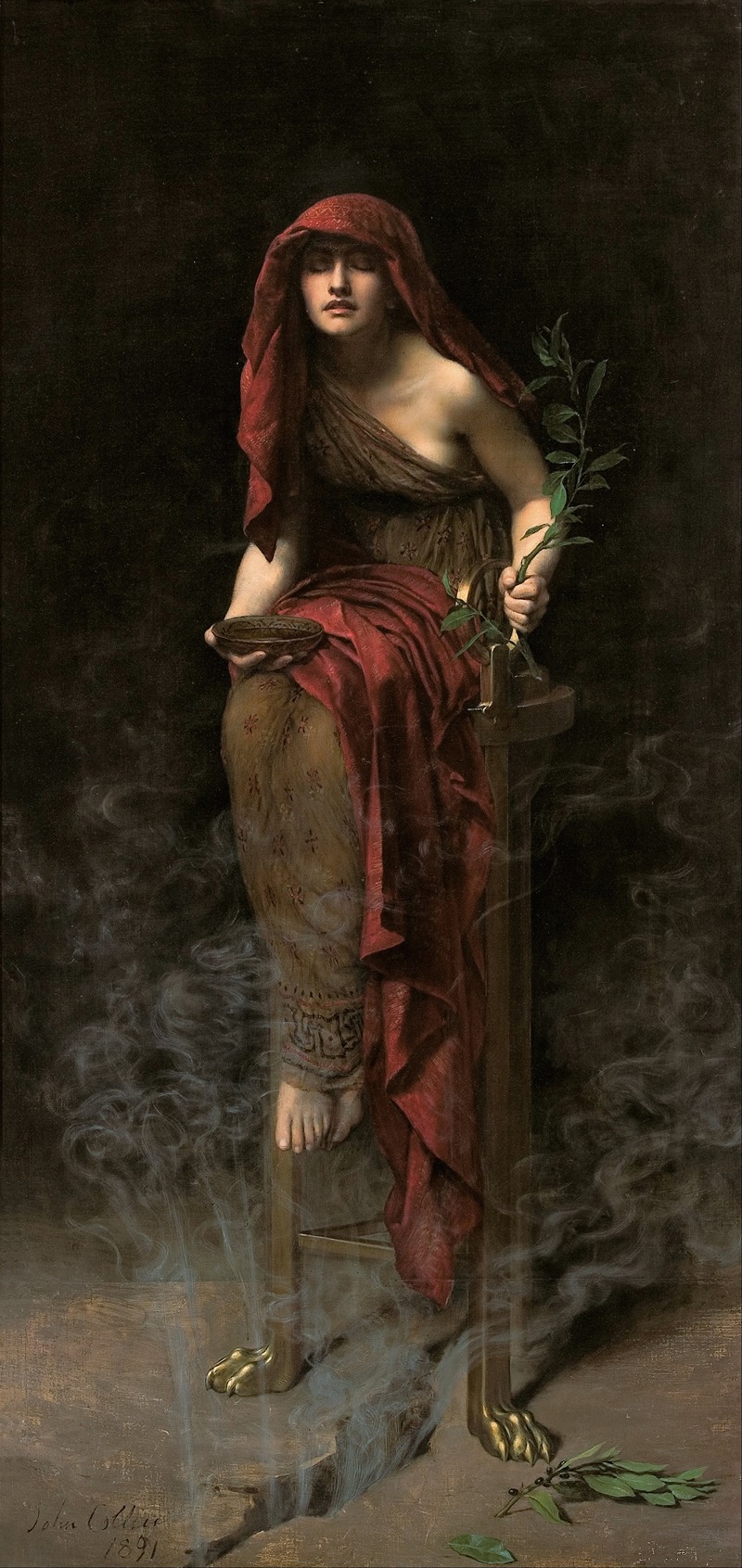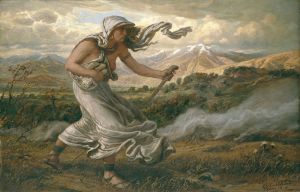
Priestess of Delphi
A hand-painted replica of John Collier’s masterpiece Priestess of Delphi, meticulously crafted by professional artists to capture the true essence of the original. Each piece is created with museum-quality canvas and rare mineral pigments, carefully painted by experienced artists with delicate brushstrokes and rich, layered colors to perfectly recreate the texture of the original artwork. Unlike machine-printed reproductions, this hand-painted version brings the painting to life, infused with the artist’s emotions and skill in every stroke. Whether for personal collection or home decoration, it instantly elevates the artistic atmosphere of any space.
"Priestess of Delphi" is a painting by the British artist John Collier, completed in 1891. John Collier was a prominent figure in the Pre-Raphaelite movement, known for his detailed and vivid portrayals of mythological and historical subjects. The painting depicts a priestess of the Oracle of Delphi, a significant religious and cultural institution in ancient Greece.
The Oracle of Delphi was located at the Temple of Apollo in Delphi, and it was considered one of the most important oracles in the Greek world. The priestess, known as the Pythia, served as the medium through which Apollo was believed to communicate with humans. She would deliver prophecies and guidance to individuals and city-states, often in a trance-like state induced by natural gases rising from a chasm in the earth.
In Collier's painting, the priestess is portrayed seated, with a contemplative expression, suggesting her deep connection to the divine and her role as a conduit for Apollo's messages. She is dressed in traditional Greek attire, with a laurel wreath adorning her head, symbolizing her association with Apollo, who was often depicted with laurel. The setting is richly detailed, capturing the grandeur and mystique of the ancient temple environment.
Collier's work is characterized by its attention to detail and use of color, which bring the scene to life and emphasize the spiritual and mystical aspects of the subject. The painting reflects the Victorian fascination with classical antiquity and the romanticized view of ancient Greek culture that was prevalent during the 19th century.
The "Priestess of Delphi" is an example of Collier's ability to blend historical accuracy with artistic imagination, creating a work that is both informative and evocative. It is a testament to his skill in capturing the essence of his subjects, making them accessible and engaging to contemporary audiences.
John Collier's interest in mythology and history is evident in many of his works, and "Priestess of Delphi" is no exception. The painting not only showcases his technical prowess but also his ability to convey the timeless allure of ancient myths and legends. Through his art, Collier invites viewers to explore the rich tapestry of human history and the enduring power of storytelling.
Today, "Priestess of Delphi" is appreciated for its artistic merit and its contribution to the understanding of the cultural and religious practices of ancient Greece. It remains a significant piece within Collier's oeuvre and continues to be studied and admired by art historians and enthusiasts alike.








![Medinet Abou [Medinet Habu], Thebes. Dec. 5th, 1832.](/imgs/217510/s/david-roberts-medinet-abou-medinet-habu-thebes-dec-5th-1832-9c2109da.jpg)


